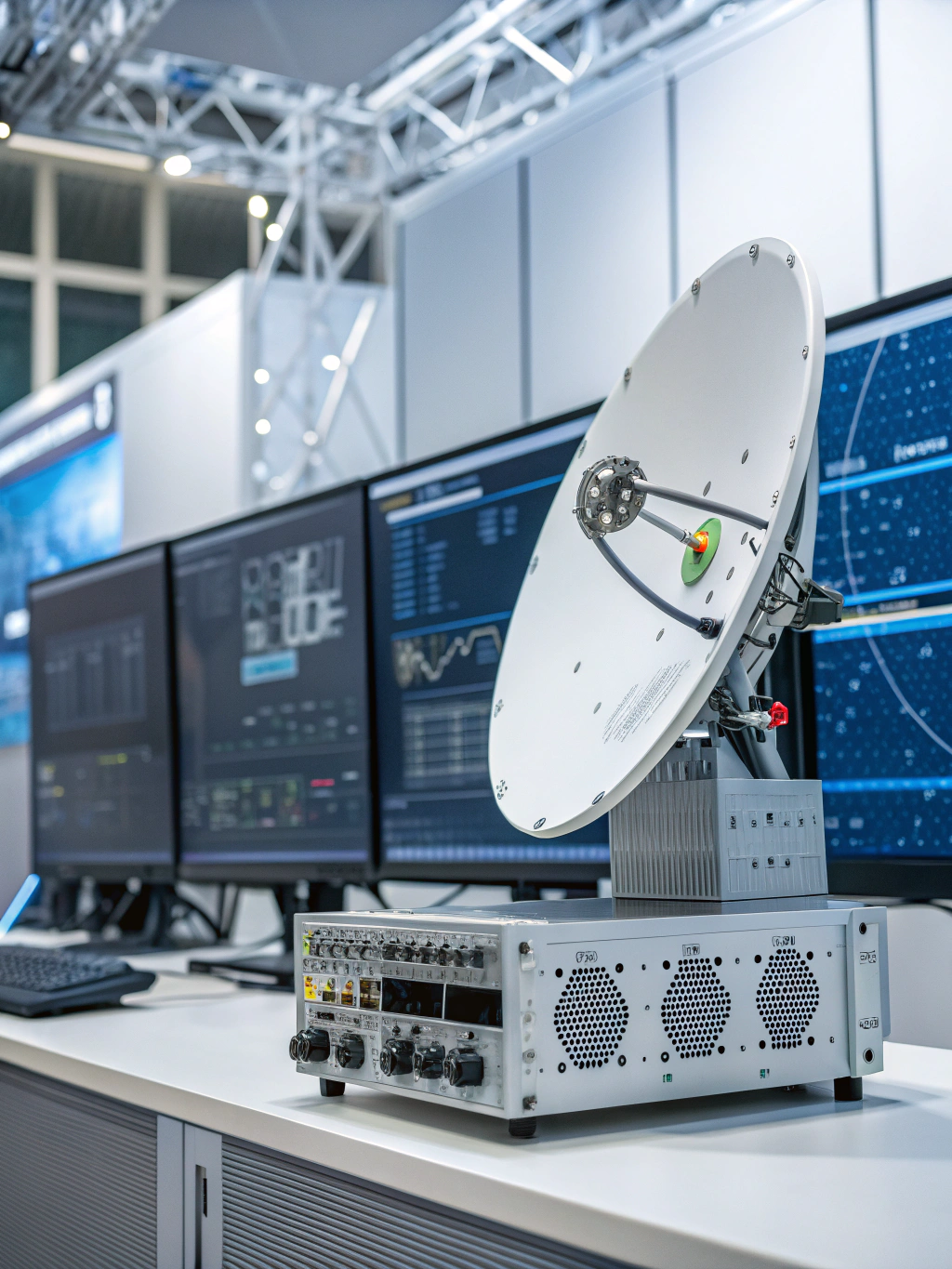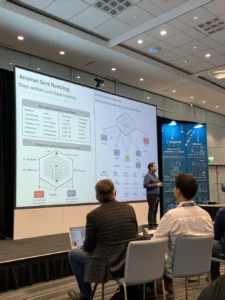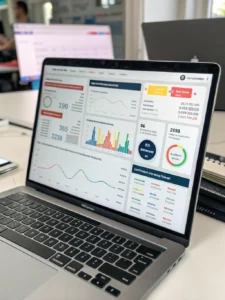AI on the Edge: How Combining Edge Computing and AI is Redefining Real-Time Analytics
The Future is Here: How Edge Computing & AI are Reshaping Industries The convergence of cutting-edge technologies is sparking a revolution across industries, and at the heart of it lies a powerful synergy: edge computing artificial intelligence integration. We're moving beyond centralized cloud processing towards a future where intelligence is distributed closer to the source of data – dramatically improving speed, security, and efficiency. From autonomous vehicles to smart factories, this powerful combination is driving innovation at an unprecedented pace. But what exactly is happening, and how can businesses leverage this transformative trend? This article will delve into the details, exploring the benefits, challenges, and real-world applications of this exciting technological shift. Understanding the Power Duo: Edge Computing and AI Let's break down the core components. Edge computing involves processing data near where it's generated – on devices like sensors, cameras, or industrial machines. This contrasts with traditional cloud computing, where data is sent to a remote data center for processing. The key advantage of edge computing is reduced latency, even when dealing with massive amounts of data. This responsiveness is crucial for applications demanding real-time decision-making. For example, a self-driving car needs to process sensor data instantly to react to changing road conditions – a task impossible with cloud-based processing alone. Now, enter artificial intelligence (AI). Traditionally, AI models required significant computational power, making them best suited for cloud environments. However, advancements in AI algorithms and hardware have enabled the deployment of AI models directly on edge devices. This is where the magic of edge computing artificial intelligence integration truly happens. Why Integrate AI with Edge Devices? Combining these technologies yields significant benefits: Reduced Latency: AI inference happens locally, minimizing delays and enabling real-time responses. This is vital for applications like fraud detection, predictive maintenance, and industrial automation. Enhanced Privacy & Security: Sensitive data can be processed locally, reducing the need to transmit it to the cloud and minimizing security risks. This is particularly important in healthcare and finance. Bandwidth Optimization: Processing data at the edge reduces the amount of data sent to the cloud, saving bandwidth costs and improving network performance. Increased Reliability: Edge computing allows applications to continue functioning even when network connectivity is limited or unavailable. This is critical for remote locations and mission-critical systems. Scalability and Efficiency: Allows for decentralized processing of data, leading to improved scalability and reduced computational load on central servers. AI on edge devices powers predictive maintenance by detecting anomalies on machinery, allowing for proactive repairs and preventing costly downtime. Use Cases Across Industries: Real-World Applications The opportunities for edge computing artificial intelligence integration are vast. Here are some prominent examples: Manufacturing: Predictive maintenance using AI algorithms running on ai on edge devices analyzes sensor data from machinery to identify potential failures before they occur. This leads to reduced downtime and improved operational efficiency. Smart factories benefit from real-time quality control and optimized production processes. Healthcare: Remote patient monitoring employs AI on edge devices to analyze vital signs and detect anomalies, enabling faster responses to medical emergencies. AI-powered diagnostics can be performed at the point of care, improving patient outcomes. Retail: Edge-based AI drives personalized shopping experiences by analyzing customer behavior in real-time. Smart cameras can track foot traffic, optimize store layouts, and prevent theft. Transportation: Autonomous vehicles rely heavily on edge computing artificial intelligence integration to process data from sensors and cameras in real-time, enabling safe and reliable navigation. Smart traffic management systems use AI to optimize traffic flow and reduce congestion. Agriculture: AI on edge devices analyze data from sensors placed in fields to optimize irrigation, fertilization, and pest control, leading to increased crop yields and reduced environmental impact. Energy: Smart grids use AI to optimize energy distribution and predict equipment failures, enhancing grid reliability and efficiency. Navigating the Challenges: Overcoming Hurdles to Adoption While the benefits are compelling, implementing edge computing artificial intelligence integration isn't without its challenges. Security: Securing edge devices and data is paramount, as they are often deployed in remote and physically vulnerable locations which calls for robust edge security solutions. Complexity: Managing a distributed network of edge devices can be complex, requiring specialized expertise and tools. Limited Resources: Edge devices often have limited processing power, memory, and battery life, requiring optimized AI models. Data Management: Managing and synchronizing data across a distributed edge network can also pose a challenge. Interoperability: Ensuring seamless interoperability between different edge devices and platforms is critical for successful deployment. Feature Cloud Computing Edge Computing Edge Computing Artificial Intelligence Integration Processing Location Centralized Data Center Distributed near data source Distributed near data source with local AI inference Latency High Low Very Low Bandwidth Usage High Low Low Security Vulnerable to centralized attacks Enhanced, data remains localized Enhanced, data remains localized + local AI security Use Cases Data warehousing, complex analytics Real-time applications, IoT devices Autonomous vehicles, predictive maintenance The Future Outlook: What's Next for Edge AI? The future of edge computing artificial intelligence integration is incredibly bright. We'll see: More powerful edge devices: Advances in semiconductors are leading to more powerful and energy-efficient edge devices. Improved AI algorithms: New AI algorithms are being developed to run efficiently on resource-constrained edge devices. Increased adoption of federated learning: Federated learning allows AI models to be trained on decentralized data without sharing the raw data, enhancing privacy and security. Growth of AI-as-a-Service (AIaaS) for the edge: Cloud providers are offering AIaaS solutions that make it easier to deploy AI models on edge devices. 5G Connectivity: The rollout of 5G networks will provide the bandwidth and low latency needed to support increasingly sophisticated edge AI applications. Ready to Unlock the Power of Edge AI? Edge computing artificial intelligence integration is more than just a trend – it's a fundamental shift in how we process and analyze data. By embracing this technology, businesses can unlock new levels of efficiency, security, and innovation. What are your thoughts on the future of edge AI? Share your comments and experiences below! Don’t forget to share this article with your network. You can also explore our other articles on edge computing benefits and stay updated on the latest tech advancements. WordPress Formatting Notes: This content is formatted as a standard WordPress post. Headings are structured using H2 and H3 tags. Bullet points are used for readability. Links are embedded using meaningful anchor text. An image is included with an alt attribute. A table is embedded. A call to action is included. The focus and related keywords are properly incorporated as requested.
Share this content:














Post Comment